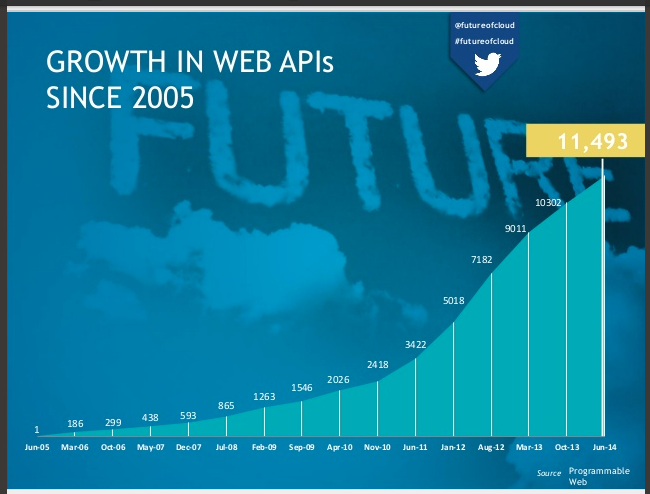Cloud 2.0 Promises To Transform, Disrupt Industries

The growing computational power and pervasiveness of the cloud is generating new applications and services that could transform industries and create new ones, a sunny survey of the future of cloud computing predicts.
The annual survey conducted by North Bridge Venture Partners and Gigaom Research found that 49 percent of the survey's 1,358 respondents said they are using cloud computing to generate revenue or create new products.
When combined with other emerging technologies like 3-D printing, the survey echoes previous academic surveys predicting that cloud computing could even help usher in a new era of design and manufacturing.
In the meantime, Everything-as-a-Service offerings are surging, the survey found, with software-as-a-service adoption alone growing by 74 percent over the last four years covered by the annual survey. The "cloud is changing software," the authors stressed.
With big data and other applications transforming cloud computing into a commodity, or "utility-like service, the survey's authors argue that a new wave of "cloud-native applications" is leading to a transformative "second cloud front." For example, the survey cites more than 11,000 applications programming interfaces now residing in the cloud that are delivering greater functionality as a service.
Despite the upbeat forecast, the survey also found concerns about the rising costs of transitioning IT infrastructure to the cloud. Expense was as a concern for 18 percent of respondents, compared to just 6 percent four years ago. Those concerns could grow as companies continue to squeeze their IT budgets. The survey found that 80 percent of IT budgets are used just to maintain current infrastructure.
Nevertheless, somewhere between 60 to 85 percent of survey respondents said they will move some or a significant part of their operations to the cloud over the next 12 to 24 months.
The cloud is also allowing more enterprises to shift capital to operating expenses. The survey found that 27 percent of the large enterprises surveyed, including giants like Goldman Sachs, are shifting workloads to the cloud. "They are motivated to do so because they believe using a cloud platform service will help them lower capital expenditures," the survey's authors concluded.
As cloud version 2.0 emerges, the survey predicts it could "disrupt" entire industries. One of the most strategic for U.S. economic growth is computer-aided design and manufacturing. Traditional CAD/CAM has been largely "on premise" and limited by computing power. While collaboration has been growing, many products are still designed in isolation.
The survey noted what academic researchers have been saying for several years: The cloud could help revive U.S. manufacturing. The cloud report cited a handful of companies like Onshape, Proto Labs, and MarkForged that are pursuing "simultaneous design and collaboration" by leveraging the computational power of the cloud. Using tablets, they are modeling designs and collaborating across times zones to test and validate designs before prototypes move to the manufacturing phase.
Those conclusions square with earlier surveys that tout the potential of cloud computing in areas like manufacturing. The disruptive power of the cloud infrastructure rests with “the dynamic allocation of resources and the ‘illusion’ of infinite scale,” concluded a 2012 study on "cloud-enhanced services" by the Berkeley Roundtable on the International Economy, a think tank based at the University of California-Berkeley.
One possible outcome of the combination of cloud computing and emerging technologies like 3-D printing, or "additive manufacturing," along with "digital fabrication is a "third industrial revolution" ushered in by cloud services, the survey predicts.
Related
George Leopold has written about science and technology for more than 30 years, focusing on electronics and aerospace technology. He previously served as executive editor of Electronic Engineering Times. Leopold is the author of "Calculated Risk: The Supersonic Life and Times of Gus Grissom" (Purdue University Press, 2016).











